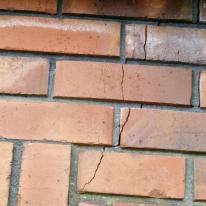Cavity brick or concrete block veneer – cracks in bricks
Listed under: Exterior, concrete and cement, masonry, brick, earthquakes, walls, wind, wall cladding, cavity brick or concrete block veneer
Cause
Building movement as a result of differential settlement of the ground, earthquake, or some other cause
Repair
-
any damage to the walls that could let rain in should be addressed without delay
-
simple hairline cracks that are not getting bigger may not be a cause for concern. They can develop after seasonal ground movement, such as expansion/contraction in clay soil under the house. These types of cracks can be filled as they appear
-
the appropriate repairs for larger cracks will depend largely on (a) the cause of the building movement and (b) whether the movement was a single event or is continuing. A chartered professional engineer will be the best person to give advice on this. Engaging an engineer is particularly recommended where cracks are wider than 5 mm, are clearly changing, take the shape of steps down the wall or have resulted in windows or doors being difficult to open or close
-
if it is determined that the cause was a single event such as an earthquake, it may be that simple repairs can be made. Cracked joints may be repointed, and it is possible to replace bricks that are cracked
-
if engaging a tradesperson to do this, ensure that they are a licensed building practitioner with a bricklaying and blocklaying license
-
if more substantial repairs are required they should be designed by an engineer and are likely to require building consent





